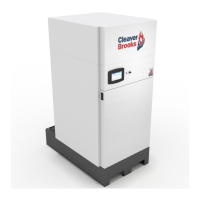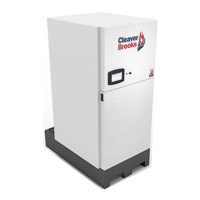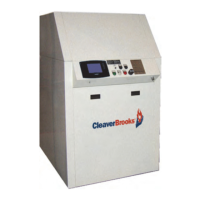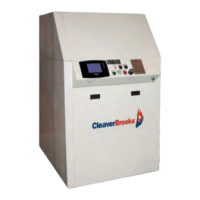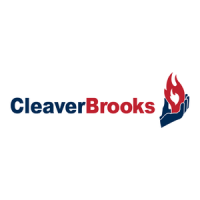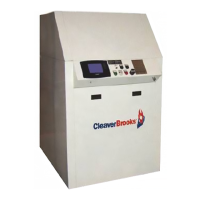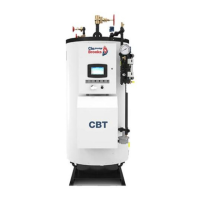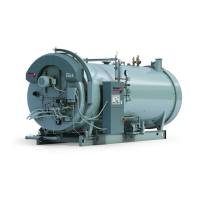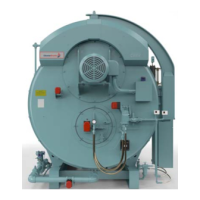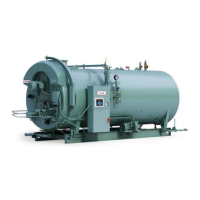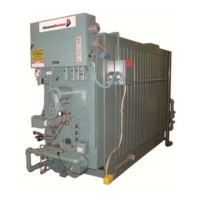BOILER BOOK CFC-E ENGINEERING DATA
23
Water Treatment
Even though hot water systems are “closed”, some amount of make-up water (up to 10%) will be
introduced. This more often than not happens from seal leaks of pumps, or other minimal leaks from
valves etc., that go unnoticed. Therefore, proper water chemistry of a hot water boiler is necessary
for good operation and longevity, particularly to ensure that free oxygen is removed to prevent
waterside corrosion.
Table 11. Model CFC-E Water Chemistry Requirements in accordance with ABMA
Glycol Application Guidelines
The Model CFC-E boiler may be operated with a solution of glycol and water. Where glycols are
added, the system must first be cleaned and flushed. Correct glycol selection and regular monitoring
of the in-use concentration and its stability is essential to ensure adequate, long-term freeze
protection, including protection from the effects of glycol-derived corrosion resulting from glycol
degradation.
Typically, ethylene glycol is used for freeze protection, but other alternatives exist, such as propylene
glycol. Glycol reduces the water-side heat capacity (lower specific heat than 100% water) and can
reduce the effective heat transfer to the system. Because of this, design flow rates and pump
selections should be sized with this in mind.
Generally, corrosion inhibitors are added to glycol systems. However, all glycols tend to oxidize over
time in the presence of oxygen, and when heated, form aldehydes, acids, and other oxidation
products. Whenever inadequate levels of water treatment buffers and corrosion inhibitors are used,
the resulting water glycol mixture pH may be reduced to below 7.0 (frequently reaching 5) and acid
corrosion results. Thus, when pH levels drop below 7.0 due to glycol degradation the only
alternative is to drain, flush, repassivate, and refill with a new inhibited glycol solution.
The following recommendations should be adhered to in applying ClearFire model CFC-E boilers to
hydronic systems using glycol:
1) Maximum allowable antifreeze proportion (volume%):
50% antifreeze (glycol)
50% water
2) The glycol concentration determines the maximum allowable firing rate and output of the boiler(s). Please refer to
the firing rate limitation and corresponding high fire speed settings vs. glycol% in the charts below.
3) Maximum allowable boiler outlet/supply temperature: 185 deg F (85 deg C).
4) Minimum water circulation through the boiler:
a) The minimum water circulation must be defined in such a way that the temperature difference between
the boiler outlet/supply and inlet/return is a maximum of 40 deg F (22 deg C), defined as DT (Delta T).
A DT Limit algorithm should be enabled in the boiler controller.
Parameter Limit
Glycol 50%
pH 8.3 - 10.5
Nitrates 50 ppm
Sulfates 50 ppm
Chloride < 250 ppm
Oxygen < 0.1 ppm
Specific Conductivity
< 3500 mmho/cm
Total Hardness < 10 ppm
